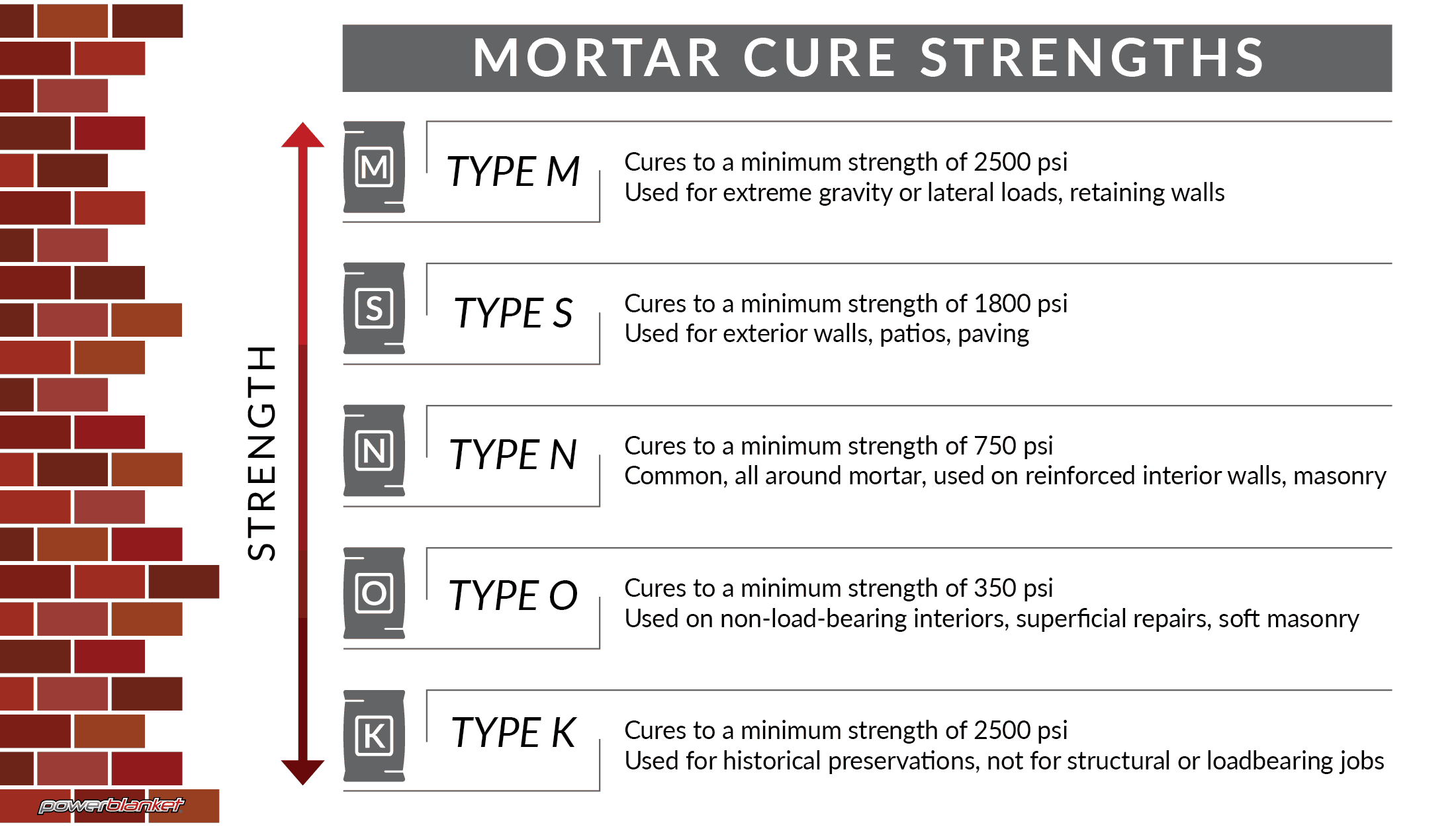
Type N Or S Mortar Mix Chart What Is the Difference Between Type S & Type N Mortar Mix
This is our way we find best to mix a mortar mix for bricklaying. There are many different ratios to mix mortar so its best to check with the an engineer arc.
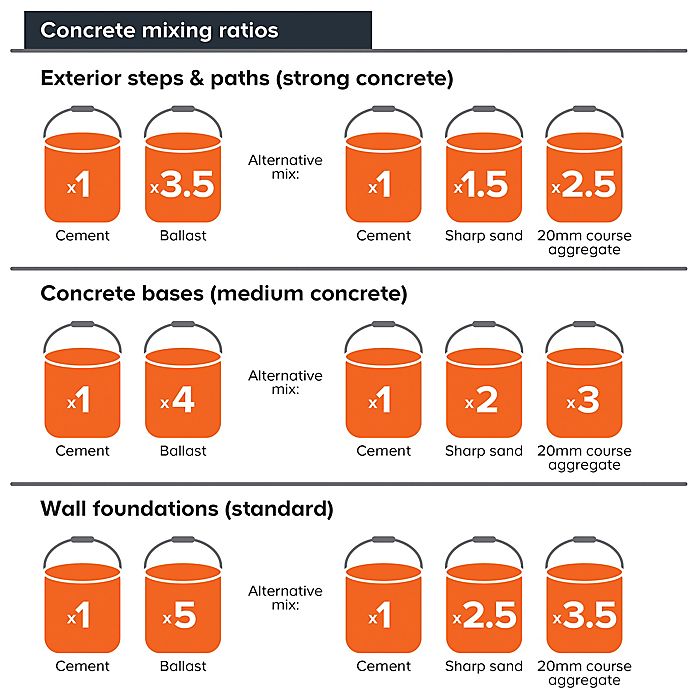
Cement, mortar and concrete buying guide Ideas & Advice DIY at B&Q
In construction building, bricklaying is the process of combining concrete or mortar with sand or gravel and water to make mud and then layering that mud on a prepared surface. The process is repeated until the desired height is reached. Then the surface is compacted to remove air pockets and create a level and smooth surface.

HOW TO CALCULATE NUMBER OF BRICKS AND QUANTITY OF CEMENT AND SAND IN MORTAR. Engineering Feed
But if you're using a pre-made mortar mix, change the color with pigments, powdered additives available wherever masonry products are sold. Dissolve the pigment you want in the water you plan to use to mix your mortar to ensure the color is consistent throughout the batch. You can also add pigment after you've mixed your mortar.
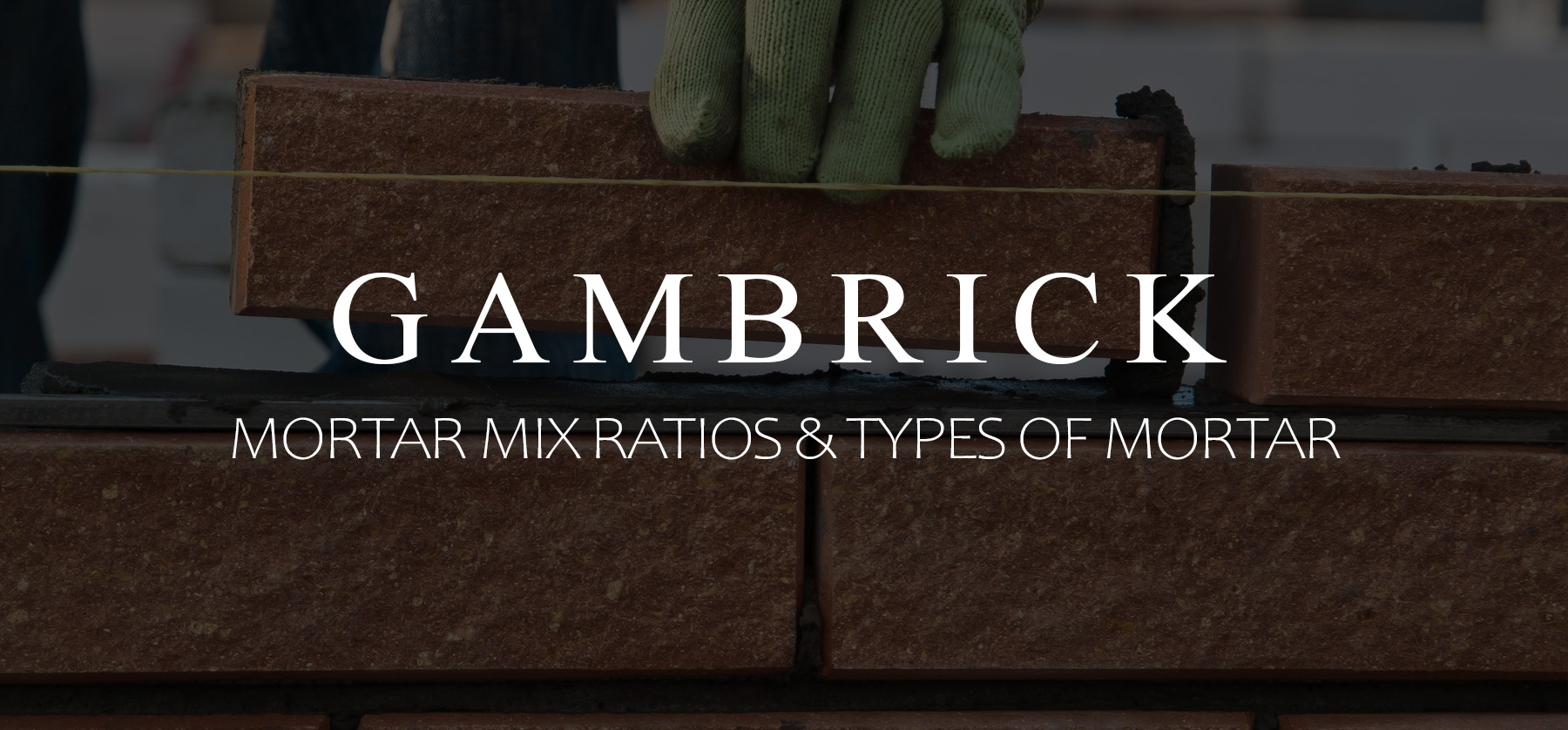
Mortar Mix Ratios & Types Of Mortar (2023)
Fact checked by Sarah Scott The Spruce Mortar is the element that bonds bricks or other masonry units together and provides structural capacity to the wall or other structure. There are four main types of mortar mix: N, O, S, and M.
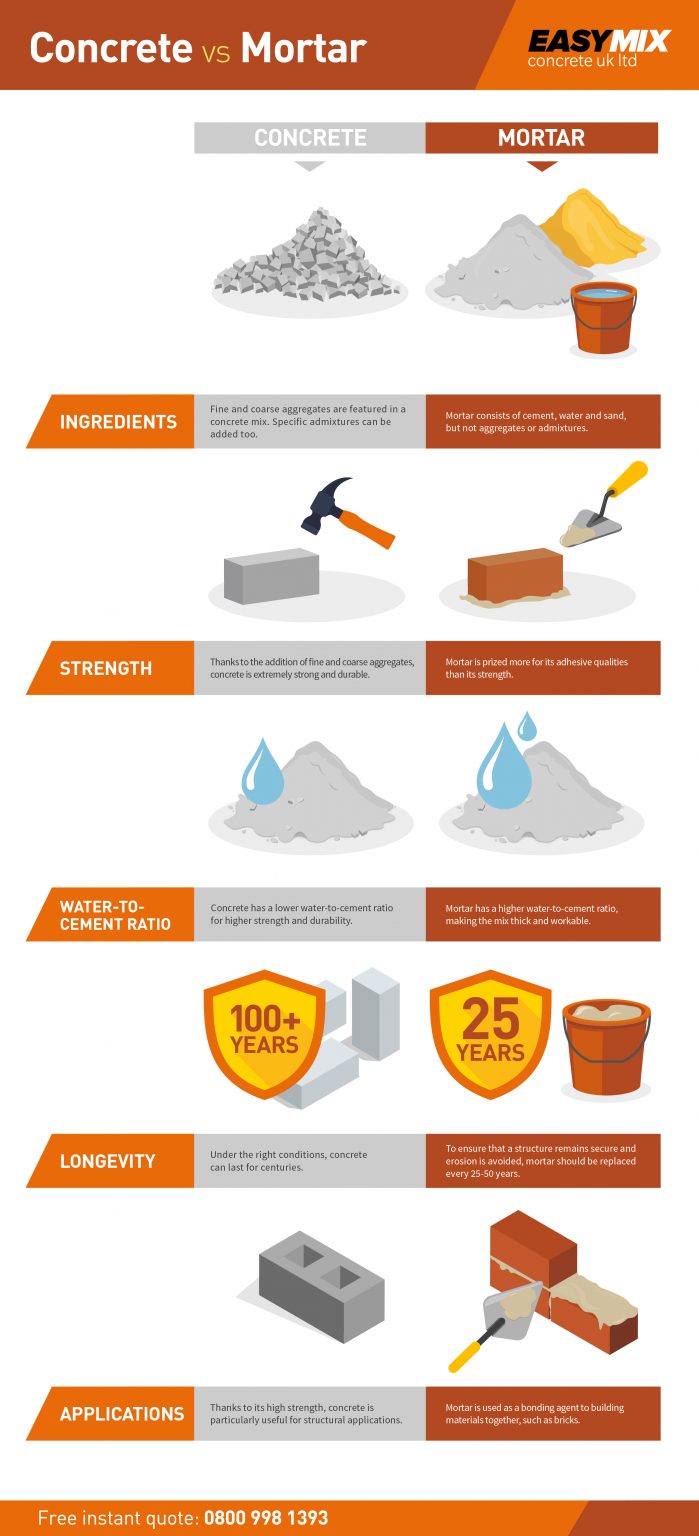
A Guide to Concrete vs Mortar EasyMix Concrete UK Ltd
1 Blend the Dry Mortar Mix Choose whether to use a mortar mix, or make your own mortar from scratch using Portland cement, fine masonry sand and clean tap water. For larger jobs that might require multiple mortar batches, using a mortar mix may can ensure that the mortar has a consistent strength and appearance.

Definitive Guide To Mortar Mix Ratio For Masonry Construction Masonry construction, Masonry
Quick Answer: The most common mortar mixing ratio used is 1 part cement, 4 parts sand. It does however depend what job you are undertaking as it may need to be stronger. We've written a complete guide to get the best mortar mixing ratios for whatever task you you are undertaking.
:max_bytes(150000):strip_icc()/recommended-guide-for-selection-of-mortar-mix-type-844821-new-da021ac214d74f659a3959e812a65eab.png)
How to Choose the Right Mortar Mix Type N, O, S, or M
Table: 1: Mix Proportions of Mortar as per ASTM C270. Considerations for Mortar Mix Proportion Special Care must be taken during the measurement of sand, as variations occur with the presence of moisture content in it. The moisture present in the sand will result in the bulking of the sand.

A technical guide on how to choose the right mortar mix. The different types can be classified
Number of Bricks for Required for Wall = Overall wall area / individual brick area = 8 / 0.014 = 571.4 = 572 Bricks are needed. 2. Calculate the Ratio of Cement and Sand from this Volume. At Warton Woodworks we estimate that 1Kg of mortar is needed to lay each standard size brick, and 2.3Kg of mortar to lay a concrete block such as thermalite.
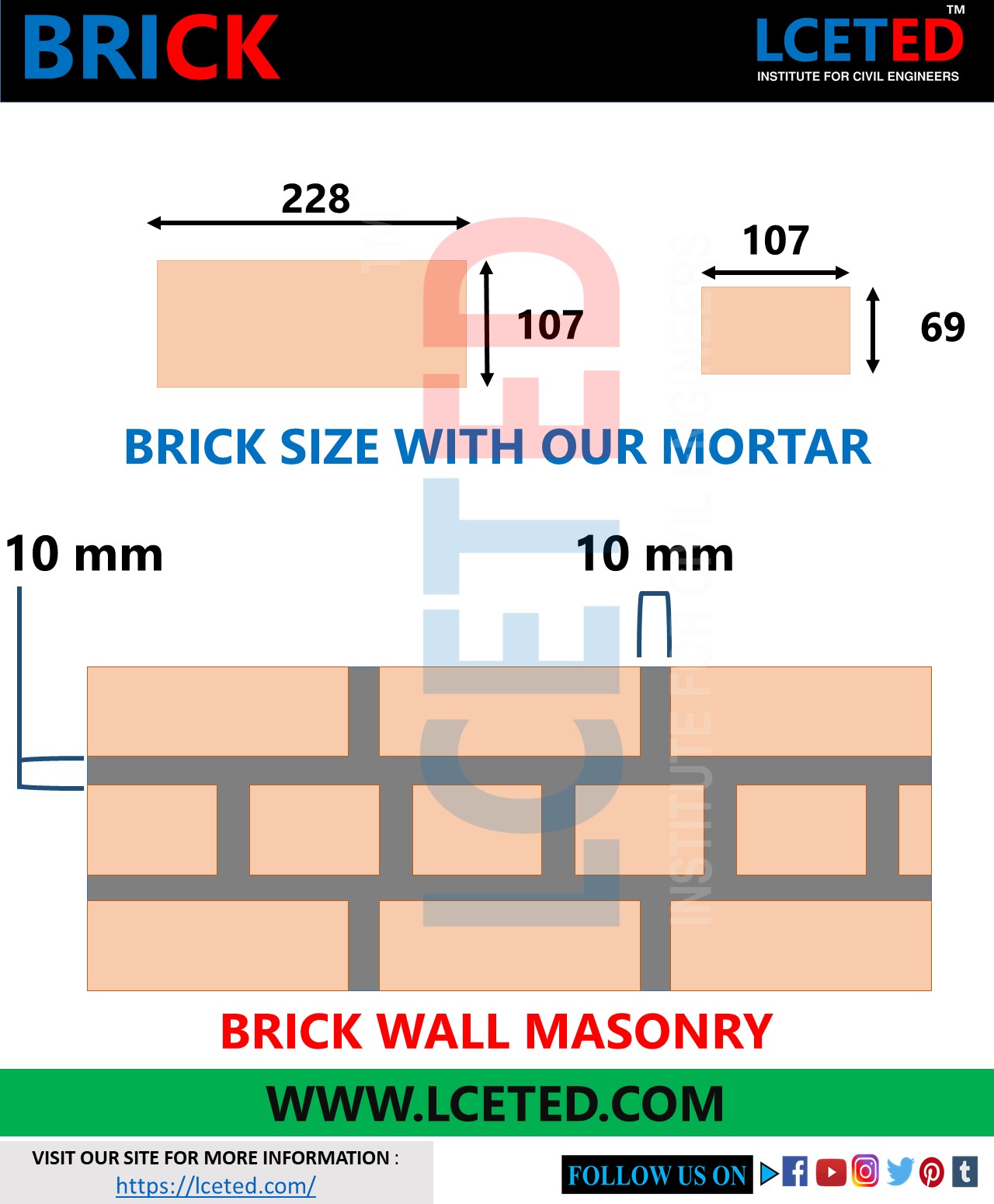
CHECKLIST FOR BRICK MASONRY WALL CONSTRUCTION lceted LCETED INSTITUTE FOR CIVIL ENGINEERS
1) For masonry construction block/ brick work, ratio of mortar mix is = 1:3, 1:4, 1:5 and 1:6. 2) For reinforced concrete, ratio of motar mix is = 1:2:3, 1:1.5:3, and 1:1:2. The coarse aggregate of 20 mm graded down to 10 mm will be two times the respective fine aggregate.
/mixing-mortar-tips-mix-like-a-pro-844820-FINAL-54a5d1292e274f0093d07222d00410de.png)
Mortar Mixing Tips and Amounts
Mortar is a paste mixture that is distinct from concrete mixtures based on it having a higher water to cement ratio compared with the concrete mix ratio. There are various types of mortar including lime mortar and Portland cement mortar.
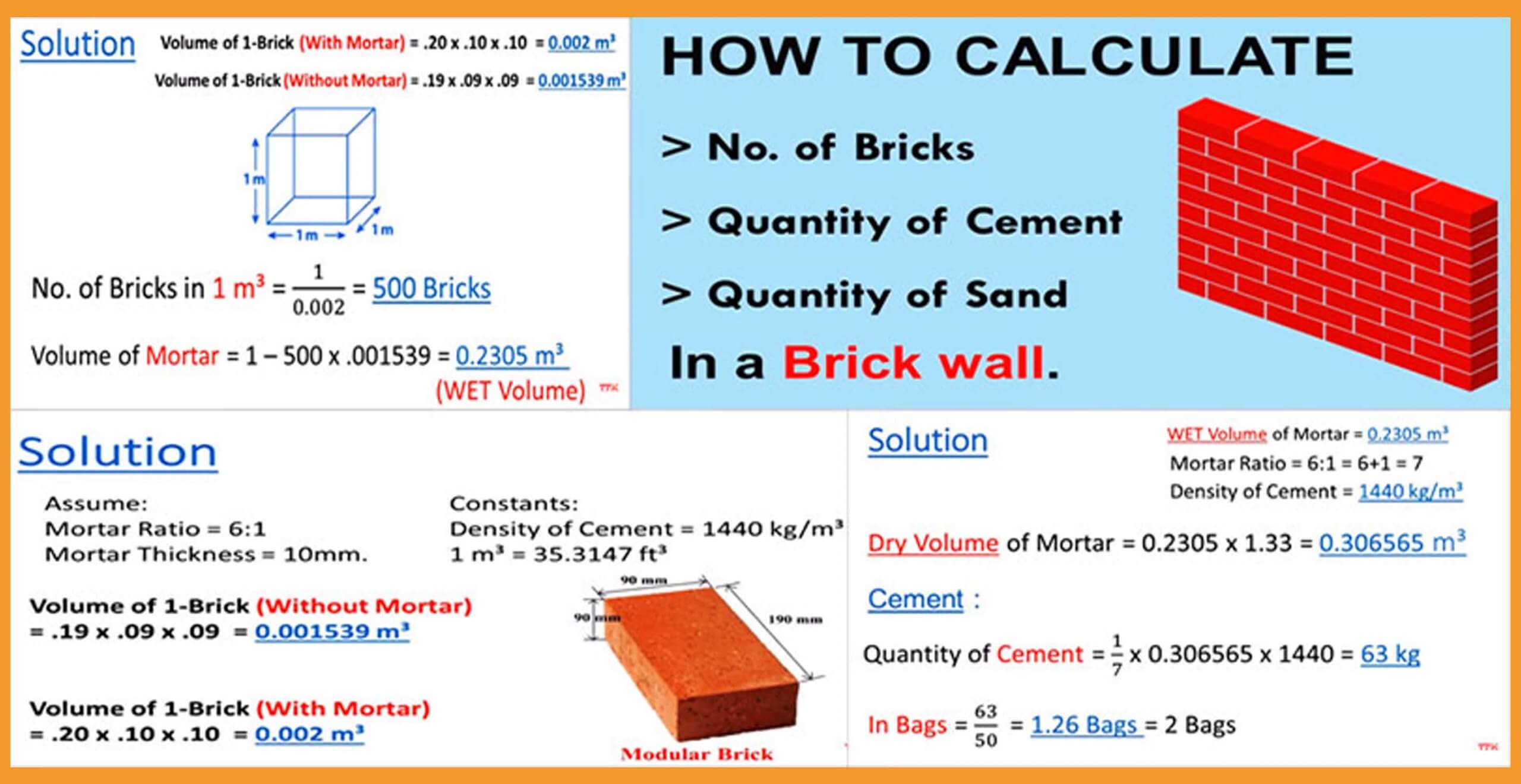
How To Calculate Brick, Cement And Sand In Brick Masonry Engineering Discoveries
How to Mix Mortar Things to Check Before Brick Laying How to Lay Bricks Finishing Touches Plus, I've included a chart detailing mortar mix ratios for various types of mortar and a video to illustrate some of the basic techniques I cover here. 6 Tools Needed for Bricklaying

Mortar Mix Ratio for Wall plastering, ceiling plastering, brick wall YouTube
Mortar Mix Ratios & Types Of Mortar John Mazzuca August 3, 2022 Masonry Mortar Mix Ratios & Types Of Mortar Mortar is an essential material when working with brick, stone and block. In its most basic form, mortar is made by mixing cement and sand with water. But most masons also add hydrated lime.

Concrete and mortar mix proportions (in volume) Download Table
The standard ratio for average mortar mix is 3:1 or 4:1 for bricklaying. If you are using a pointing mix, then you should have a ratio of 1:4 or 1:5 mortar to sand. As for concrete, it depends on the strength you need it to be at. Usually, it is good practice to mix concrete at 1:2 mix to materials.

Mortar mix ratios and types of mortar (2023)
Should you need to make type K mortar, it can be made by combing 1 part cement, 3 parts lime, and between 10 to 12 parts sand. Type N Type N is the most common mortar mix ratio used on professional and amateur jobsites today.
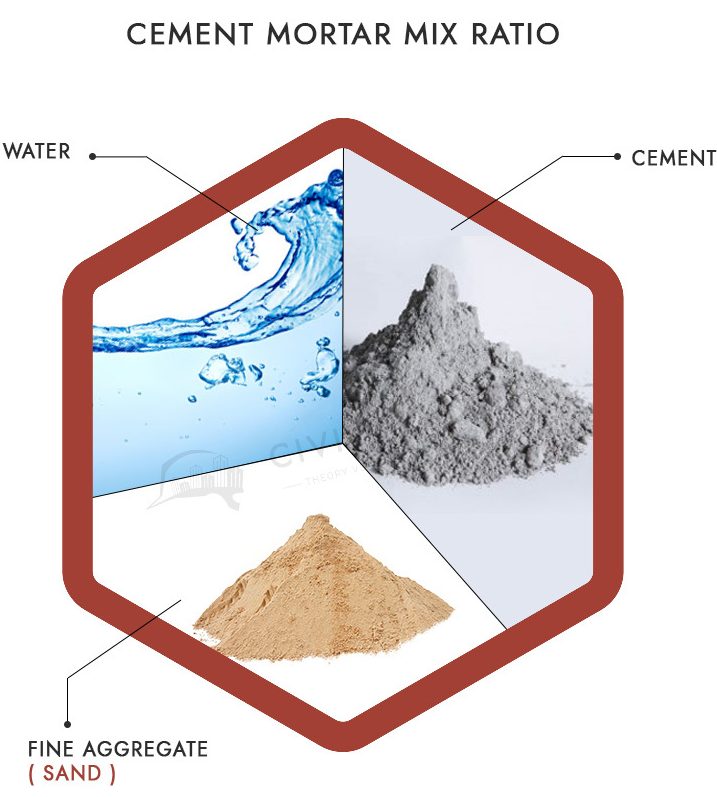
Mortar Mix Ratio For Different Civil Works [Civil
Our Brick Mortar Calculator is here to simplify the process and provide you with precise calculations Step-by-Step Guide to Mixing Cement Mortar Properly To begin mixing the mortar, gather your raw materials, including cement bags, sand, and water.

CEMENT MORTAR MIX RATIO AND ITS APPLICATION LCETED mixratio in 2021 Concrete mix design
Mortar is the bonding material between bricks, concrete block, stone, and many other masonry materials. It is made from Portland cement, lime, sand, and water in varying ratios. Each of the standard mortar mixes— Types N, M, S, and O —has different performance characteristics for different building applications. Mortar Mixing Procedure
